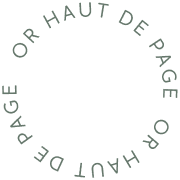This Is Why We Use Sustainably Harvested Cork Instead Of Leather In Our Products

Since our brand was founded, all of us here at tentree have been committed to planting trees. We're proud of the more than 25 million trees that have been planted so far. But the trees isn't where our mission ends. Alongside challenging climate change, desertification, erosion, and other environmental issues, we're also challenging the status quo for the manufacturing of apparel.
When our store got started, we used leather in some of our products. But we were quickly educated on the fact that leather isn't exactly something an environmentally conscious company should be proud of. So we began looking for solutions that were sustainable and eco-friendly.
And that's how we found cork.

But wait a minute, isn't cork endangered?
Cork can be harvested without cutting down trees, and in fact, ours is. The process is simple.
Cork comes from the bark of the cork oak tree. Cork trees can usually, although not always, be harvested from twice a year. In the late spring and again in the late summer, the cork is stripped off of the tree. Our supplier is able to do this twice a year because the bark is regenerative and quickly grows back. So the cork is produced quickly and without actually harming or cutting down any trees.
Portugal, where our cork is produced, has been producing cork commercially for more than three centuries. The workers in charge of harvesting the cork are paid a fixed, livable daily wage.
People employed to harvest cork are actually some of the best paid agriculture workers in the country. They're paid upwards of 120 euros per day and are provided medical benefits as well. The entire process is ethical and perfectly sustainable.
Cork workers don't work alone. They actually work in pairs. One worker climbs the tree while the other remains on the ground. They each begin delicately removing the dead bark which reveals the cork beneath. This cork is harvested almost in the same way you would peel an orange. A single tree can yield an impressive 15 kg of cork.
Once harvested in Portugal, the cork is then sent to a facility in Italy. Strips of cork are are applied to a cotton backing using a vegan-friendly glue.
Well how do we know the trees aren't actually being cut down?
Cork is very important in Portugal, so much so that it's actually illegal to cut down a cork tree, even if it's dead, without express permission from the government. Seeing stands of dead cork oak trees isn't particularly uncommon. Any land owner who's caught cutting down cork trees without permission is barred from using the land for 25 years and is often saddled with a steep fine.
Many cork oak trees have been around for centuries. One of the oldest trees is said to be about 212 years, nicknamed the "whistler tree" because of the number of singing birds that are attracted to it.
Knowing what we know about cork, it was a no-brainer to make the switch

